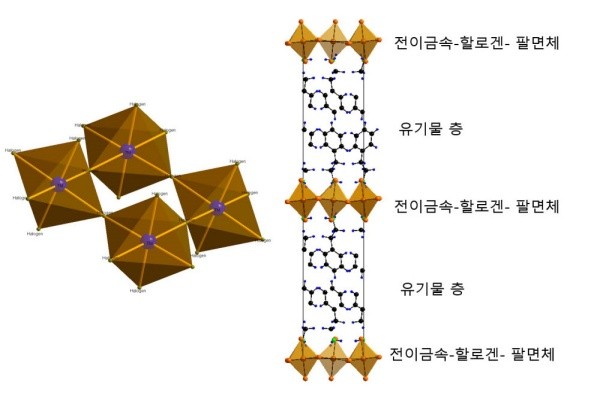A South Korean research team has developed a method for making a new 2D matter with magnetism.
The Korea Atomic Energy Research Institute (KAERI, President Park Won-seok) announced on Tuesday that the institute has become the first in the world to develop a method for making a 2D magnetic matter from organic-inorganic halide perovskite. The study involved cooperation between Dr. Oh In-hwan and Dr. Park Ka-ram with Dr. Kim Ki-yeon at the center from the KAERI and Professor Yoo Cheon-yeol and a research team led by Dr. Kim Joon-seo of Daegu Gyeongbuk Institute of Science and Technology (DGIST).
The joint research team has created a 2D organic-inorganic perovskite crystal (A2BX4) that has inorganic layers with magnetic transition metals and organic phenylethylammonium layers stacked on top of each other. It then melted the crystal in special organic solvent and severed coupling and went through self-assembly method that allows the crystal to form a structure on its own by rapidly spinning the crystal on a silicon substrate. By doing so, the team was able to create an ultra-thin film with seven to ten atomic layers in thickness. An advantage of this method is its ability to make magnetic ultra-thin films with 10 to 20 nanometers in thickness relatively uniformly.

Most of recent attempts involved “Langmuir-Blodgett technique”. This technique is able to lay single layers of nanoparticles in a desirable arrangement on top of solution by adjusting surface pressure. However, it is not capable of synthesizing 2D crystals with magnetism.
The 2D magnetic matter developed by the research team is an advanced new material, and active studies on 2D magnetic matter are taking place in fields such as spintronics that require magnetism.
“Starting with this study, we are going to make attempts to create a magnetic matter with one atomic layer in thickness.” said Dr. Kim Ki-yeon. “We are going to continue to work on follow-up studies so that the 2D magnetic matter that we have developed can establish itself as a new matter that can be used in the spintronics field that requires high efficiency, high integration, and ultralight weight.”
Staff Reporter Kim, Youngjoon | kyj85@etnews.com